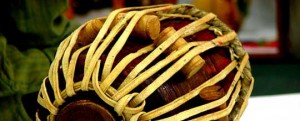There is a belief that the seven ‘swaras’ in the Hindustani Music were conceived from the sounds of the nature. The seven swaras as we all know are- Sa, Re, Ga, Ma, Pa, Dha, Ni.
Represented by:
Shadaja (Sa); the rapturous sound of the peacock when rain clouds gather in the sky
Rishabha (Re); the bellowing of a cow when her calf is separated from her
Gandhara (Ga); the bleating of a goat in a flock
Madhyama (Ma); the cry of a heron
Panchama (Pa); the sound of the Indian Kokila (nightingale) in spring
Dhaivata (Dha); the neighing of a horse
Nishada (Ni); the trumpeting of an elephant
An interesting thing that is noted in the swaras is Sa, Ma and Pa are sounds made by birds whereas Re, Ga, Dha and Ni are sounds made by animals. If we get into too deep into these swaras then these swaras further have 7 divisions. Often people seem to get bewildered when they hear the word “RAGA”. Ragas are nothing but different combinations of these swaras where any swara can be repeated or even omitted. We’ll discuss more about swaras and ragas in our upcoming articles.
“Kin bairan kaan bhare, Mora piya mose bolat nahin”
I am sure that only 1% of the readers must have listened to this traditional composition as compared to the 100% readers who must have listened to the latest and very famous composition “Balam Pichkari”. Indian classical music is losing its popularity and value in the current day society especially amongst the youth. The youth of India nowadays prefer to listen to bollywood or western songs instead of classical music. This traditional composition whose lyrics have been mentioned above is in Raag Darbari Kannada which was bought into our North Indian music by Miyan Tansen who was a great musician in Emperor Akbar’s court. Now in India music has many genres like pop, jazz, folk, classical music where classical music can be further classified as Carnatic music and Hindustani music. Hindustani Music is by far the most versatile form of singing and its origination and evolution dates back to the 12th Century CE in areas presently known as the North India, Pakistan, Bangladesh and to some extent in areas of Nepal and Afghanistan, whereas Carnatic Music is a classical tradition of the South India.

































Hello, i would really like to dig to a greater depth on the topic of swar and the origins of te swar themselves, not music in general.
Your article was wonderful!! Where can i find more regarding this?! What was your source?!?
You article is fabulous
good explain